Must a touched chess piece always be moved in a tournament?
Chess blog for latest chess news and chess trivia (c) Alexandra Kosteniuk, 2011
Hi everyone,
We found this very nice column where expert Geurt Gijssen answers a very relevant chess question.
Must a touched chess piece always be moved?
Hi everyone,
We found this very nice column where expert Geurt Gijssen answers a very relevant chess question.
Must a touched chess piece always be moved?
Question Dear Mr. Gijssen, I would like to know your opinion about the following episode. I was deputy arbiter in the sixteenth world senior championship 2006 played in Arvier (Aosta Valley-Italy). A game of the third round reached the diagram position:
Black's last move was 32…Rd8xBd5.
After White's move, Black summoned me and told me that White had played first 33.Rc1xd5, but soon after he tried to correct his mistake playing 33.Rd1xd5.
According to his claim, Black asked me to enforce the regulation.
First of all, I asked which piece White touched first. Both players agreed that White touched first the Rc1. I decided not to compel White to move the Rc1, but I let him play 33.Rd1xd5.
My decision derived from the following reasoning:
- The thirty-third move was a capture, else White had to move the Rc1.
- It is evident that White intended to capture the black rook with his Rd1 and not to move the Rc1.
- I convinced myself that White touched the Rc1 not "deliberately" (according to article 4.3 of the Laws of Chess), but only as a slip of hand (lapsus manus). Note that the two white rooks are very close.
Was I wrong? I showed the case to many people (arbiters and players) and more than eighty percent said I was wrong. Now I still have doubts. For this reason your judgment will be very important for me. Thank you very much. Renzo Renier (Italy)
Answer I refer to Article 4.3 of the Laws of Chess:
If the player having the move deliberately touches on the chessboard:
a. one or more of his own pieces, he must move the first piece touched which can be moved.
b. one or more of his opponent's pieces, he must capture the first piece touched which can be captured.
c. one piece of each colour, he must capture the opponent's piece with his piece or, if this is illegal, move or capture the first piece touched which can be moved or captured. If it is unclear, whether the player's own piece or his opponent's was touched first, the player's own piece shall be considered to have been touched before his opponent's.
The question is, of course, did the player in your case deliberately touch the rook on c1? My personal opinion is that he did not. Therefore, I agree with your decision and surrounding argument.
From Alexandra Kosteniuk's
Also see her personal blog at







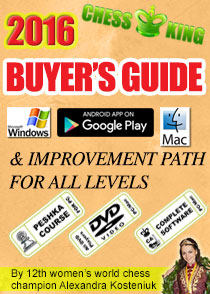




















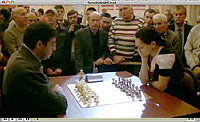
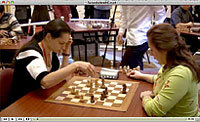
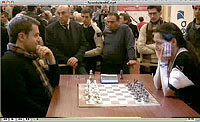
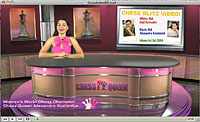


2 Comments:
At August 23, 2011 at 12:58 PM , Anonymous said...
Anonymous said...
I believe the old rules said something like "touch with the intention of moving" - under those rules I think it is clearer as the player had no intention of moving that rook.
Paul D, Abu Dhabi
At August 23, 2011 at 2:40 PM , Anonymous said...
Anonymous said...
"touch with the intention of moving" refers to the arbiter being able to read the player's mind. Just another poor phrasing of chess rules. With incredibly so many (thousands) questions from players and officials and arbiters world-wide, when will the law-makers sit down to write down better laws of chess, instead of hiding behind "we can't foresee all that can happen, so we can't write solutions"?? Also, I like Rc1xd5, as it doubles the Rooks immediately. It reminds of castling short-side, with added extra Rf1-e1 or Rf8-e8
Post a Comment
Note: Only a member of this blog may post a comment.
Subscribe to Post Comments [Atom]
<< Home